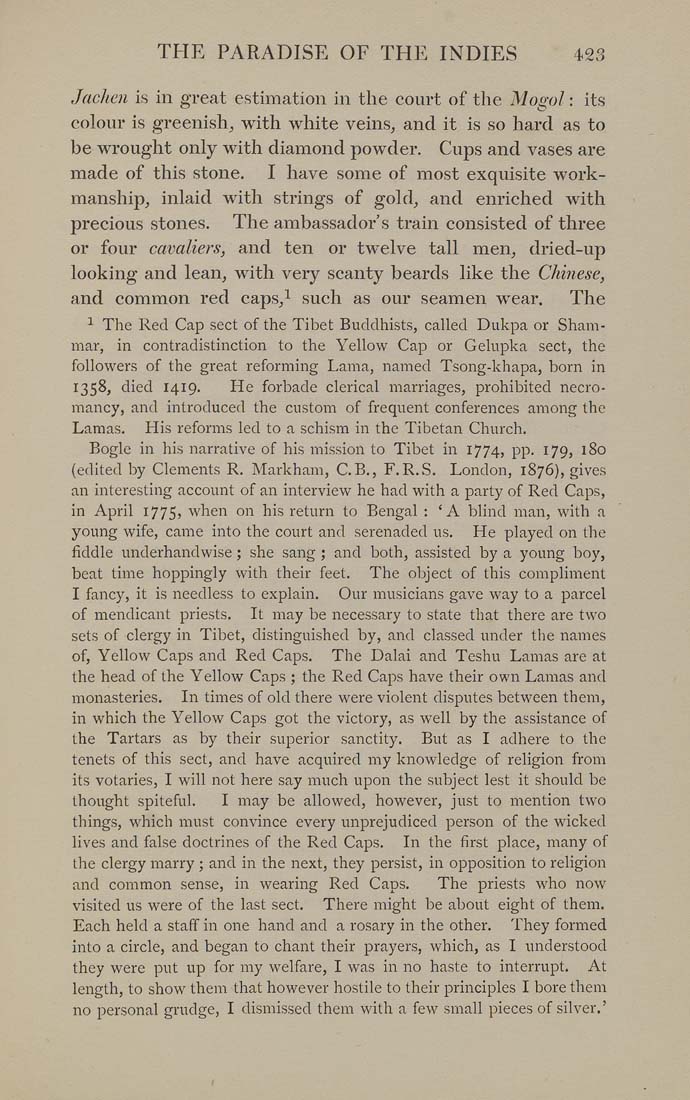THE PARADISE OF THE INDIES 423
Jachen is in great estimation in the court of the Mogol: its
colour is greenish, with white veins, and it is so hard as to
be wrought only with diamond powder. Cups and vases are
made of this stone. I have some of most exquisite work¬
manship, inlaid with strings of gold, and enriched with
precious stones. The ambassador's train consisted of three
or four cavaliers, and ten or twelve tall men, dried-up
looking and lean, with very scanty beards like the Chinese,
and common red caps,! gucjj as our seamen wear. The
1 The Red Cap sect of the Tibet Buddhists, called Dukpa or Sham-
mar, in contradistinction to the Yellow Cap or Gelupka sect, the
followers of the great reforming Lama, named Tsong-khapa, born in
1358, died 1419. He forbade clerical marriages, prohibited necro¬
mancy, and introduced the custom of frequent conferences among the
Lamas. His reforms led to a schism in the Tibetan Church.
Bogle in his narrative of his mission to Tibet in 1774, pp. 179, 180
(edited by Clements R. Markham, C.B., F.R.S. London, 1876), gives
an interesting account of an interview he had with a party of Red Caps,
in April 1775, when on his return to Bengal : 'A blind man, with a
young wife, came into the court and serenaded us. He played on the
fiddle underhandwise; she sang ; and both, assisted by a young boy,
beat time hoppingly with their feet. The object of this compliment
I fancy, it is needless to explain. Our musicians gave way to a parcel
of mendicant priests. It may be necessary to state that there are two
sets of clergy in Tibet, distinguished by, and classed under the names
of. Yellow Caps and Red Caps. The Dalai and Teshu Lamas are at
the head of the Yellow Caps ; the Red Caps have their own Lamas and
monasteries. In times of old there were violent disputes between them,
in which the Yellow Caps got the victory, as well by the assistance of
the Tartars as by their superior sanctity. But as I adhere to the
tenets of this sect, and have acquired my knowledge of religion from
its votaries, I will not here say much upon the subject lest it should be
thought spiteful. I may be allowed, however, just to mention two
things, which must convince every unprejudiced person of the wicked
lives and false doctrines of the Red Caps. In the first place, many of
the clergy marry; and in the next, they persist, in opposition to religion
and common sense, in wearing Red Caps. The priests who now
visited us were of the last sect. There might be about eight of them.
Each held a staff in one hand and a rosary in the other. They formed
into a circle, and began to chant their prayers, which, as I understood
they were put up for my welfare, I was in no haste to interrupt. At
length, to show them that however hostile to their principles I bore them
no personal grudge, I dismissed them with a few small pieces of silver.'
|








